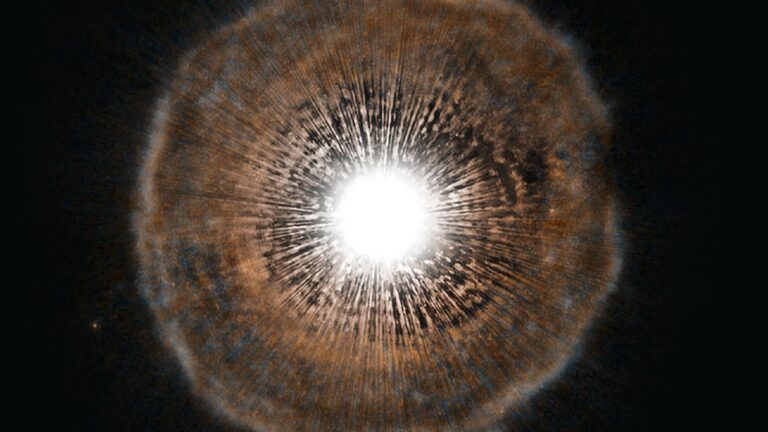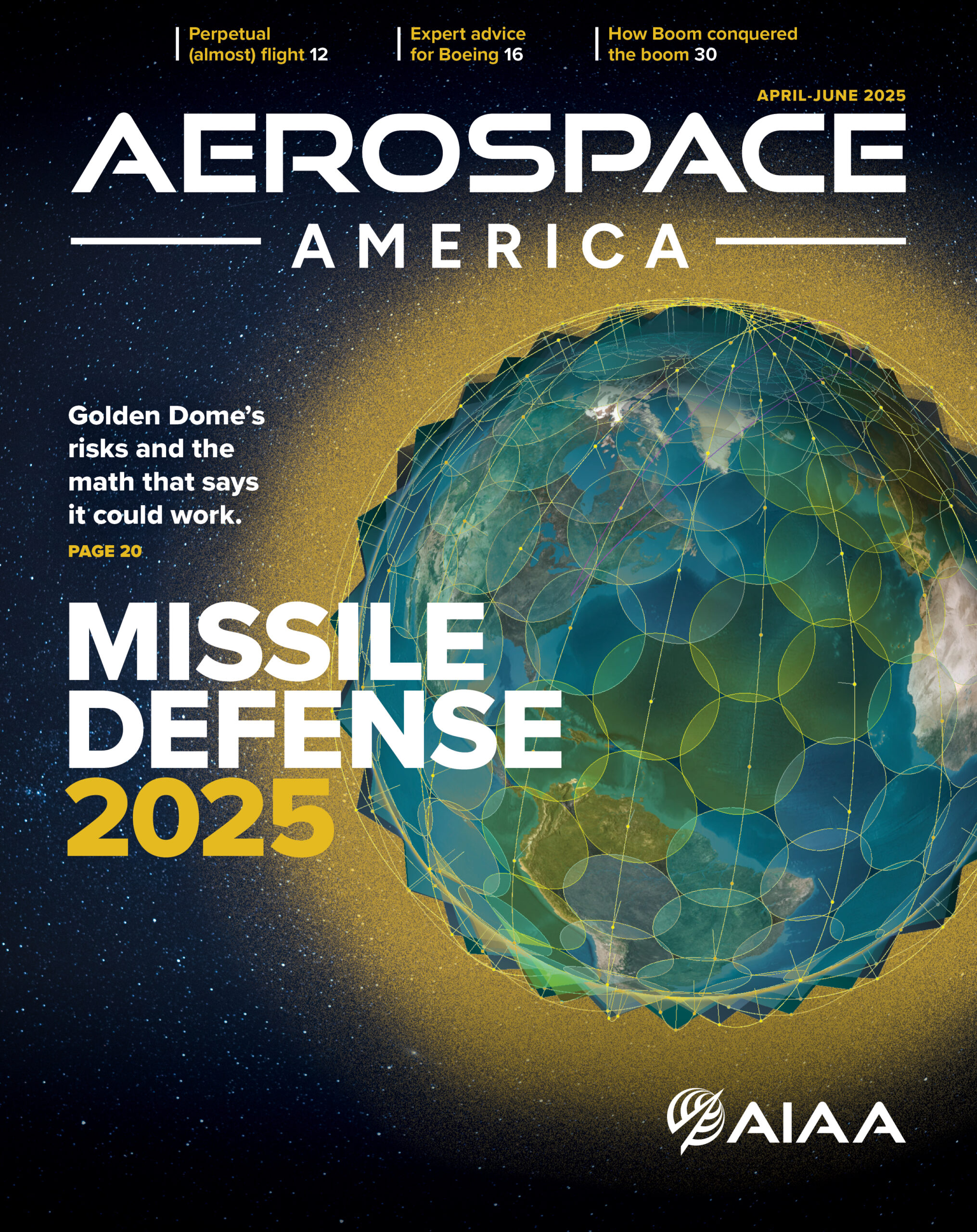Q: What cosmic feature is pictured above, and how do such features figure into research related to the expanding universe?
Send a response of up to 250 words to [email protected]. By responding, you are committing that the thoughts and words are your own and were not created with the aid of artificial intelligence. DEADLINE: noon Eastern June 2.
FROM THE FEBRUARY/MARCH ISSUE: We asked you to explain the physics of rain drops and radio waves that define the best satellite link for watching a movie on a rainy day.
WINNER: The composition of rain (water drops) is such that it causes attenuation (loss of strength) of radio frequency signals. The raindrops absorb some of the transmitted energy, just as the food placed inside of a microwave is heated by absorption of some of the microwave’s energy. The attenuation depends on the link frequency and tends to increase with frequency. Hence, the lowest-frequency signals would experience the least attenuation, and the X-band between 8 and 12 GHz is preferable to Ku-band (12 to 18 GHz) and the Ka-band (27 to 40 GHz).
Don Edberg, Associate Fellow
Pomona, California
Don is a professor emeritus of engineering at Cal Poly Pomona.




